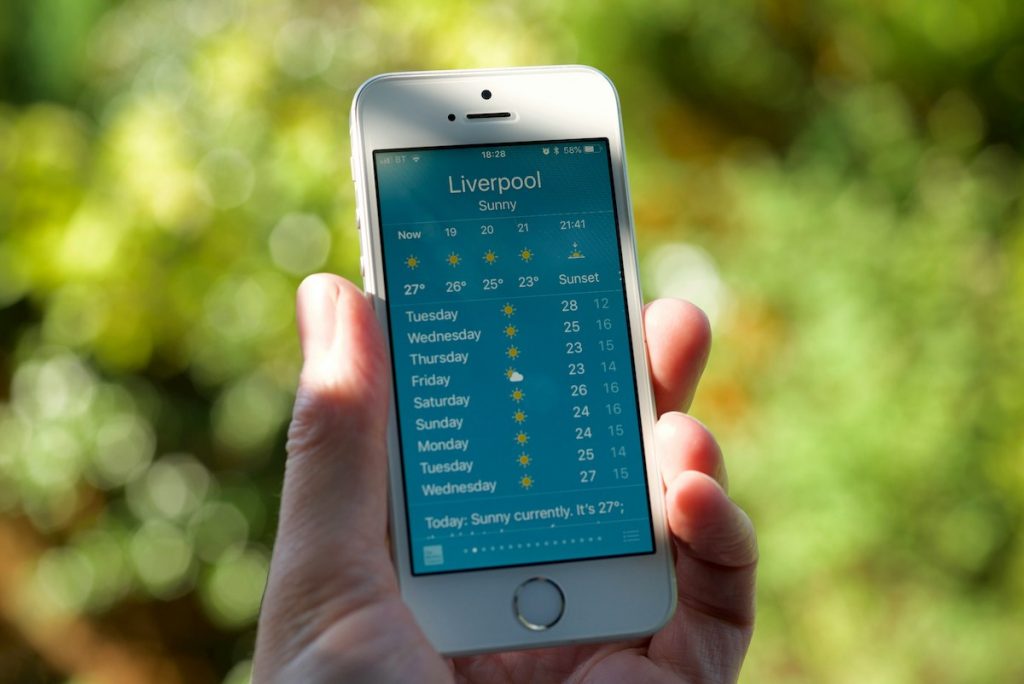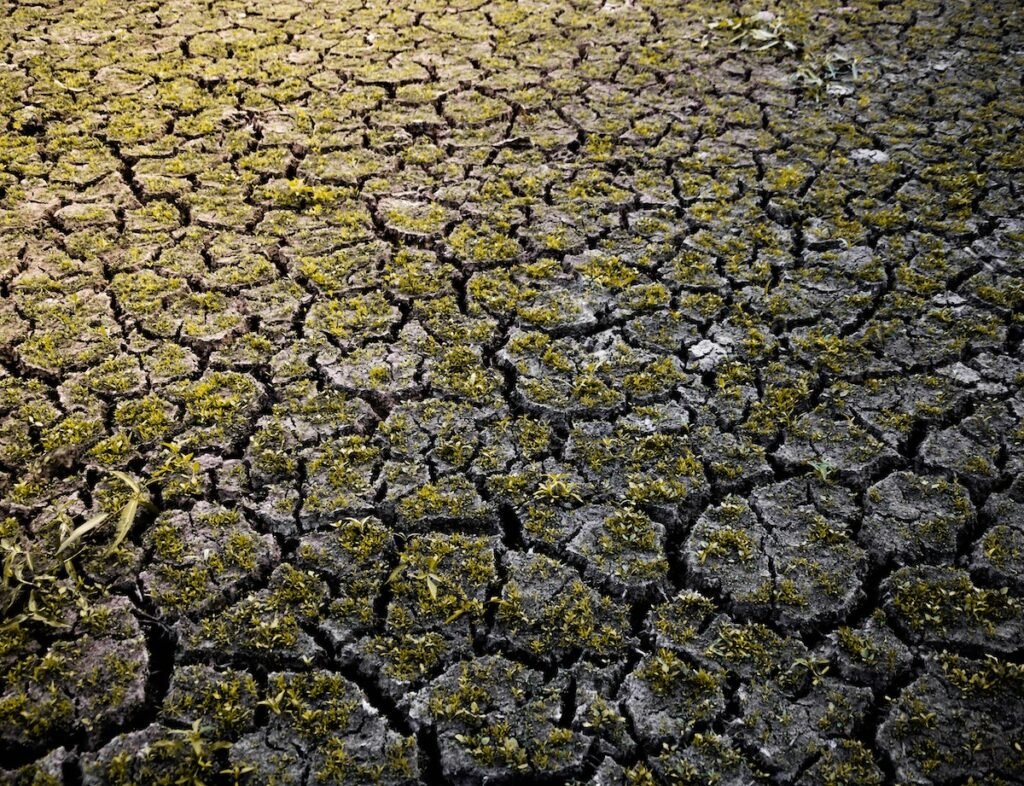[ad_1]

The human physique is a finely tuned instrument, intricately attuned to the setting during which it exists. Think about, for a second, the fragile stability of our physique’s inside temperature regulation. A mere one-degree Celsius enhance in our physique temperature can sign the onset of fever, triggering a cascade of physiological responses as our immune system rallies to revive equilibrium. This sensitivity to temperature fluctuations underscores the profound interconnection between our bodily and psychological well being.
From the delicate shifts in ambient temperature to the onslaught of utmost climate occasions, our our bodies and minds are inextricably linked to the ever-changing local weather that surrounds us. But, whereas the seen impacts of local weather change could dominate headlines and seize our consideration, it’s the delicate, long-term variations in temperature that always wield probably the most profound affect on our psychological well-being (Palinkas & Wong, 2020).
The surprising enhance in temperature may affect psychological well being by varied mechanisms. Physiological modifications, like shifts in blood stream or serotonin ranges, and cognitive alterations as a result of disrupted sleep and results on mind connectivity are doable. Societal shifts induced by temperature modifications, resembling heightened aggression and stress from financial downturns or elevated alcohol consumption, additionally contribute (Hou et al., 2023). Moreover, people with pre-existing psychological diseases, probably as a result of impaired thermoregulation from psychiatric drugs, could also be particularly weak (Mullins & White, 2019).
Analysis has proven that long-term shifts in temperature patterns can have a big affect on our psychological well-being, with implications that ripple by our each day lives in methods each seen and unseen. As an illustration, rising ambient temperatures have been linked to elevated suicide charges in lots of nations, additional underscoring the pressing want to deal with the psychological well being implications of local weather change. The World Well being Group (WHO), in a latest coverage temporary (2022), emphasises the exacerbation of social, environmental, and financial danger components for psychological well being issues by local weather change, together with the present gaps in psychological well being programs and companies to deal with these wants.
Of specific concern are the weak populations amongst us — ladies, youngsters, and the aged — who’re much less able to coping with ambient temperature modifications within the context of local weather change. Simply as a fever could have extra damaging results, and extra simply, on such populations, so too do the delicate temperature variations caused by local weather change exert a disproportionate toll on their psychological well being.
Briefly, the gradual, regular creep of rising temperatures, and the gradual erosion of acquainted local weather patterns — these too exert a silent however profound affect on our psychological well-being, with weak populations bearing a disproportionate burden.
There’s ample proof for this. A present systematic overview (Thompson et al., 2023) make clear the intricate relationship between ambient temperature and varied elements of psychological well being, analyzing how fluctuations in temperature are linked to suicidal behaviour, hospital attendance or admission for psychological sickness, and the general well being and well-being of communities.

Rising local weather temperatures impose dangers to psychological wellbeing and have been related to elevated suicide charges in lots of nations.
Strategies
This systematic overview goals to reply the analysis query: what’s the hyperlink between elevated temperature and psychological well being? To have a look at this overview query extra conclusively, each qualitative narrative and meta-analysis had been used to search out the connection between temperature rise and psychological well being. Researchers searched the eligible articles from varied databases, together with Net of Science, Embase, Psych INFO, and PubMed, screening articles revealed as much as April 7, 2022. The overview lastly included 114 analysis articles, and 19 research are eligible to run a meta-analysis to take a look at the general efficient dimension of the affiliation between temperature and psychological well being.
To be eligible for inclusion, included research may deal with such relationships in each scientific and non-clinical populations. Furthermore, the articles’ technique consists of epidemiological and observational research in people of all ages, evaluating real-world responses to ambient out of doors temperature, with documented psychological well being outcomes. Researchers deliberately excluded research focusing solely on bodily well being outcomes or these involving manipulated or managed temperature situations.
Two reviewers evaluated the standard of the included research, and the Newcastle-Ottawa Scale and the Workplace of Well being Evaluation and Translation (OHAT) method had been adopted to evaluate the chance of bias in particular person research. Moreover, qualitative synthesis was employed to extract significant insights from eligible research. For the meta-analysis, a random-effects mannequin was utilized, combining research that reported related or equal impact statistics and shared comparable publicity, consequence, and metric parameters.
Outcomes
Total, the findings assist the hyperlink between out of doors temperature and psychological well being outcomes over the world. The research divided temperature measurements into three classes: absolute temperatures, temperature variability, and heatwaves, noting that every class had completely different metrics and definitions. Whereas better temperatures in comparison with the native norm had been sometimes linked with poorer psychological well being outcomes, the advanced nature of contextual variables and inconsistent changes within the literature point out a nuanced, non-linear, and culturally dependent connection. An outline of the findings is introduced under:
Suicide outcomes
- 86 research are related to local weather change and suicide and had been narratively synthesised
- A 1°C enhance in imply month-to-month temperature correlated with a 1.5% rise in suicide incidence
- A 1°C enhance in imply each day temperature was related to a 1.7% enhance in suicide incidence
- A 1°C enhance in imply month-to-month temperature resulted in a danger ratio of 1.01 for suicides.
Hospital attendance or admission
- 43 research reported hospitalisation or admissions for psychological sickness
- Heatwaves led to a 9.7% increased incidence of hospital attendance or admission for psychological sickness
- Increased each day imply temperatures (99th percentile vs. fiftieth percentile) confirmed a danger ratio of 1.02
- No important affiliation was discovered between a ten°C enhance in each day imply temperature and hospital attendance.
Neighborhood psychological well being and wellbeing
19 research reported an affiliation between ambient out of doors temperature and group psychological well being and well-being outcomes. Heatwaves weren’t investigated on this class, and questionnaires used to evaluate psychological well being and well-being had inconsistent findings (68% of research). The relationships between ambient out of doors temperature (together with absolute temperatures, temperature variations, and heatwaves) and psychological well being are proven under:
- 84% of research reported a big affiliation between temperature metrics and psychological well being
- 74% of research confirmed increased temperatures had been typically related to worse psychological well being and well-being outcomes
- Some exceptions had been famous, resembling improved wellness in “comfy climate hours” and improved temper exterior in spring
- 17% of research didn’t discover a important affiliation between temperature and psychological well being or wellbeing.

This overview means that elevated temperature and temperature variability may very well be related to elevated circumstances of suicide and suicidal behaviour, hospital attendance or admission for psychological sickness, and poor group well being and wellbeing.
Conclusions
This systematic overview and meta-analysis present compelling proof that rising temperatures are related to worse psychological well being outcomes. The research discovered a hyperlink between excessive absolute temperatures, altering temperatures, and warmth waves and an elevated danger of suicide, suicidal behaviour, and hospital admissions for psychological sickness. It additionally demonstrates hyperlinks between group psychological well being and wellness, in addition to absolute and variable temperatures.
Nonetheless, methodological heterogeneities and ranging affect sizes require a cautious interpretation, making the general confidence of those findings low.
Regardless of a substantial physique of supportive information, the authors emphasise the necessity for extra high-quality analysis to extend confidence in figuring out the affect of ambient out of doors temperature on suicide danger. This detailed data is essential for informing focused interventions and methods in psychological well being coverage and observe.

The authors emphasise the necessity for extra high-quality analysis to extend confidence in figuring out the affect of ambient out of doors temperature on suicide danger.
Strengths and limitations
This systematic overview integrated a considerable pattern dimension, with three meta-analyses encompassing 156,109 contributors. To comprehensively discover the hyperlink between out of doors temperature modifications and psychological well being outcomes, researchers employed each qualitative synthesis for heterogeneous research and quantitative synthesis by meta-analysis. Clearly indicating the pattern dimension for every synthesis technique aids readers in a concise interpretation of analysis findings. Moreover, the research outlined ambient temperature modifications in three classes: absolute temperatures, temperature variability, and warmth waves. Whereas this added complexity to information evaluation, it distinctly highlighted variations between every class as a result of various metrics and definitions. The overview additionally tackled an more and more vital matter—how local weather change impacts human psychological well being. Current research on local weather change anxiousness point out that world local weather change considerably amplifies worries and considerations about our existence and that of future generations. It alters our cognitive notion of the setting, exerting a psychological affect on us. Because of this, the present systematic overview offers convincing synthesised information to assist the speculation that rising out of doors temperature is negatively related to our psychological well being when it comes to suicide charge, psychological sickness admission charge, and group psychological well-being.
This research has just a few limitations value noting. First, the included research had been numerous, making information evaluation a bit difficult and the outcomes measured had been inconsistent. One other factor is, whereas researchers outlined ambient temperature change and psychological well being outcomes, there may be not a set technique or common measurement for these. Psychological well being itself is a broad matter, and despite the fact that the authors categorised it into three, measurements for these outcomes differ. Curiously, research on anxiety-related outcomes weren’t included, and we all know anxiousness associated to local weather change is getting extra consideration. Subsequently, there may be room for enchancment in how we method and measure these connections.

The physique of proof on this overview though a big addition to the literature, must be interpreted with warning.
Implications for observe
This research highlights the connection between ambient temperature and psychological well being globally. Notably, analysis on absolute temperature continuously accounted for seasonal and temporal patterns, demonstrating the affect of outstanding temperatures throughout that season. The findings emphasise the necessity for evidence-based insurance policies in addressing and mitigating the psychological well being results of climate-related temperature will increase, notably for deprived teams and people who face organic, sociocultural, and financial stresses from excessive temperatures.
The proof can inform sensible issues for public well being, policymaking, and nature-based interventions. By way of public well being, the findings emphasise the importance of centered consciousness initiatives aiming at instructing communities in regards to the advanced hyperlinks between ambient temperature variations and psychological well being. Recognising that extreme temperatures worsen psychological well being inequities, there may be an pressing want for the supply of accessible psychological well being assets, notably in populations which have been disproportionately affected (Frumkin et al., 2008; Hondula et al., 2015). From a coverage viewpoint, together with psychological well being points in wider local weather change measures is essential. Insurance policies mustn’t simply establish however actively deal with the psychological well being vulnerabilities worsened by modifications in temperature, with a specific emphasis on defending marginalised folks (Camargo et al., 2020).
Nature-based interventions have emerged as an vital element in addressing these difficulties. Investments in inexperienced areas and intentional city design that prioritises psychological well-being can function as efficient limitations to the damaging results of extreme warmth (Parker et al., 2020). Concurrently, the promotion of nature-based therapies acknowledges the therapeutic potential of pure areas in addressing psychological well being points (Eaton et al., 2022).
When managing the intricate connection between local weather and psychological well being, the synthesis of assorted options is essential. These holistic strategies pave the way in which for a extra sustainable and psychologically wholesome future by creating resilience and well-being, notably amongst these most weak to the quite a few stresses brought on by growing temperatures.

Nature-based remedy can help in assuaging psychological well being issues induced by local weather change.
Assertion of pursuits
None.
Hyperlinks
Major paper
Thompson, R., Lawrance, E. L., Roberts, L. F., Grailey, Ok., Ashrafian, H., Maheswaran, H., … & Darzi, A. (2023). Ambient temperature and psychological well being: A scientific overview and meta-analysis. The Lancet Planetary Well being, 7(7), e580-e589.
Different references
Camargo, J., Barcena, I., Soares, P. M., Schmidt, L., & Andaluz, J. (2020). Thoughts the local weather coverage gaps: local weather change public coverage and actuality in Portugal, Spain and Morocco. Climatic Change, 161(1), 151-169.
Eaton, J., Nwefoh, E., Duncan, J., Sangare, O., Weekes, Y., & Adams, B. (2022). Addressing psychological well being and wellbeing within the context of local weather change: Examples of interventions to tell future observe. Intervention, 20(1), 107-107.
Frumkin, H., Hess, J., Luber, G., Malilay, J., & McGeehin, M. (2008). Local weather change: the general public well being response. American journal of public well being, 98(3), 435-445.
Hondula, D. M., Balling, R. C., Vanos, J. Ok., & Georgescu, M. (2015). Rising temperatures, human well being, and the function of adaptation. Present Local weather Change Experiences, 1, 144-154.
Hou, J., Wang, C., Wang, H., & Zhang, P. (2023). Results of temperature on psychological well being: Proof and mechanisms from China. China Financial Evaluate, 79, 101953.
Mullins, J. T., & White, C. (2019). Temperature and psychological well being: Proof from the spectrum of psychological well being outcomes. Journal of Well being Economics, 68, 102240.
Palinkas, L. A., & Wong, M. (2020). International local weather change and psychological well being. Present opinion in psychology, 32, 12-16.
Parker, J., Simpson, G. D., & Miller, J. E. (2020). Nature-based options forming city intervention approaches to anthropogenic local weather change: a quantitative literature overview. Sustainability, 12(18), 7439.
World Well being Group (2022). Psychological well being and Local weather Change: Coverage Temporary.
Photograph credit
[ad_2]


